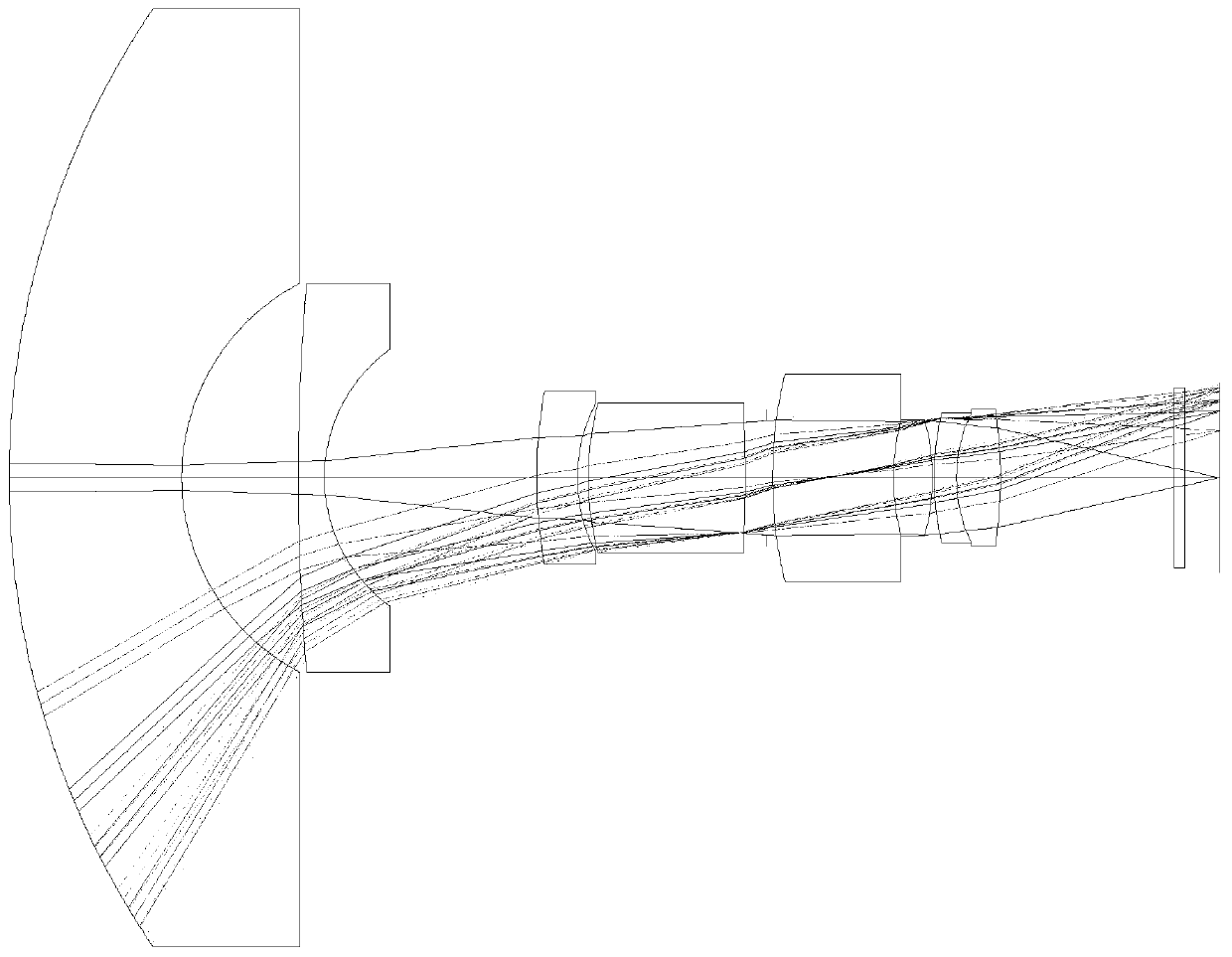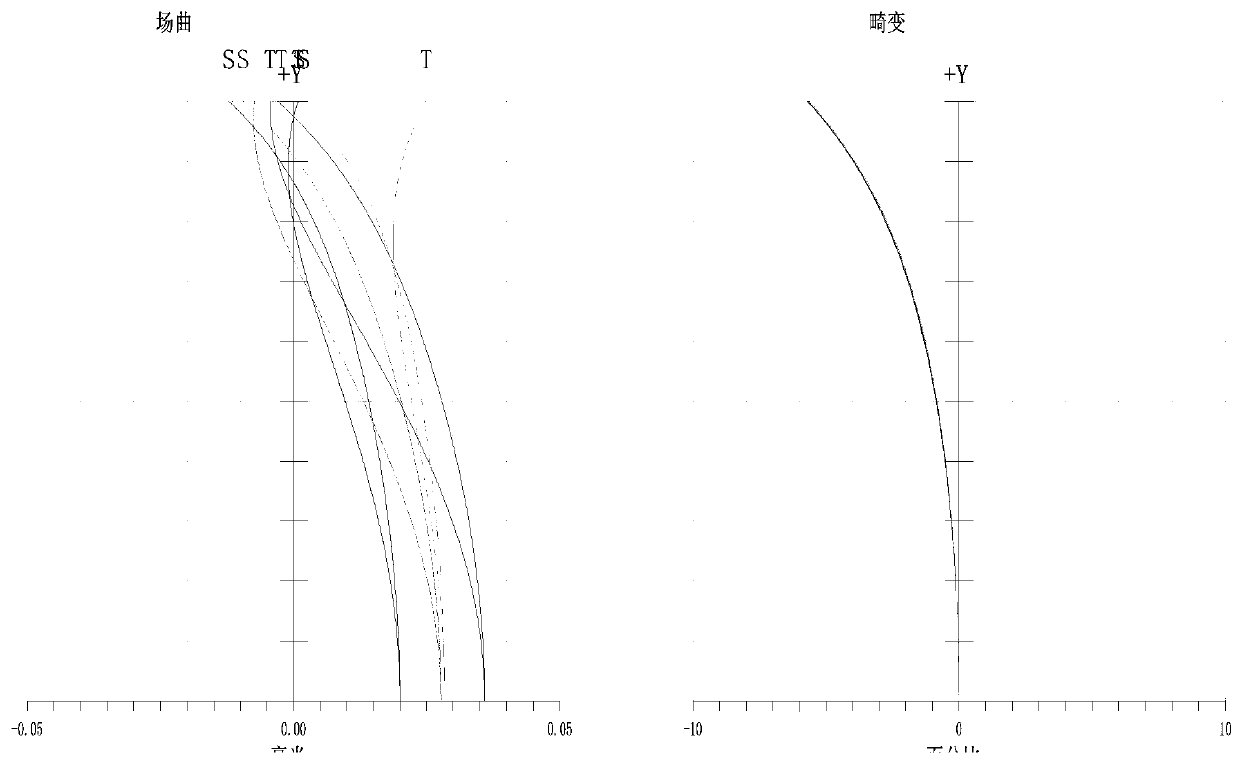Fisheye lens
A fisheye lens and lens technology, applied in the field of lenses, can solve problems such as insufficiency, achieve long working distance, ensure light, and facilitate structural design and adjustment.
- Summary
- Abstract
- Description
- Claims
- Application Information
AI Technical Summary
Problems solved by technology
Method used
Image
Examples
Embodiment Construction
[0059] The present invention is described in detail below in conjunction with accompanying drawing description:
[0060] Such as Figure 4-9 Shown, a kind of fisheye lens, it is characterized in that: comprise the front mirror group, diaphragm and rear mirror group that are arranged successively along the light incident direction, the ratio of the focal length f of described fisheye lens to the focal length f1 of front mirror group is: -4.2
[0061] The focal length f1 of the front lens group is: -4mm~-6mm, and the front lens group includes a first lens A, a second lens B, a third lens C, a fourth lens D, and a fifth lens arranged in sequence along the light incident direction E, and the sixth lens F;
[0062] The air gap between the first lens A and the second lens B is: 2 mm to 3 mm;
[0063] The air gap between the second lens B and the third len...
PUM
 Login to View More
Login to View More Abstract
Description
Claims
Application Information
 Login to View More
Login to View More - R&D
- Intellectual Property
- Life Sciences
- Materials
- Tech Scout
- Unparalleled Data Quality
- Higher Quality Content
- 60% Fewer Hallucinations
Browse by: Latest US Patents, China's latest patents, Technical Efficacy Thesaurus, Application Domain, Technology Topic, Popular Technical Reports.
© 2025 PatSnap. All rights reserved.Legal|Privacy policy|Modern Slavery Act Transparency Statement|Sitemap|About US| Contact US: help@patsnap.com



